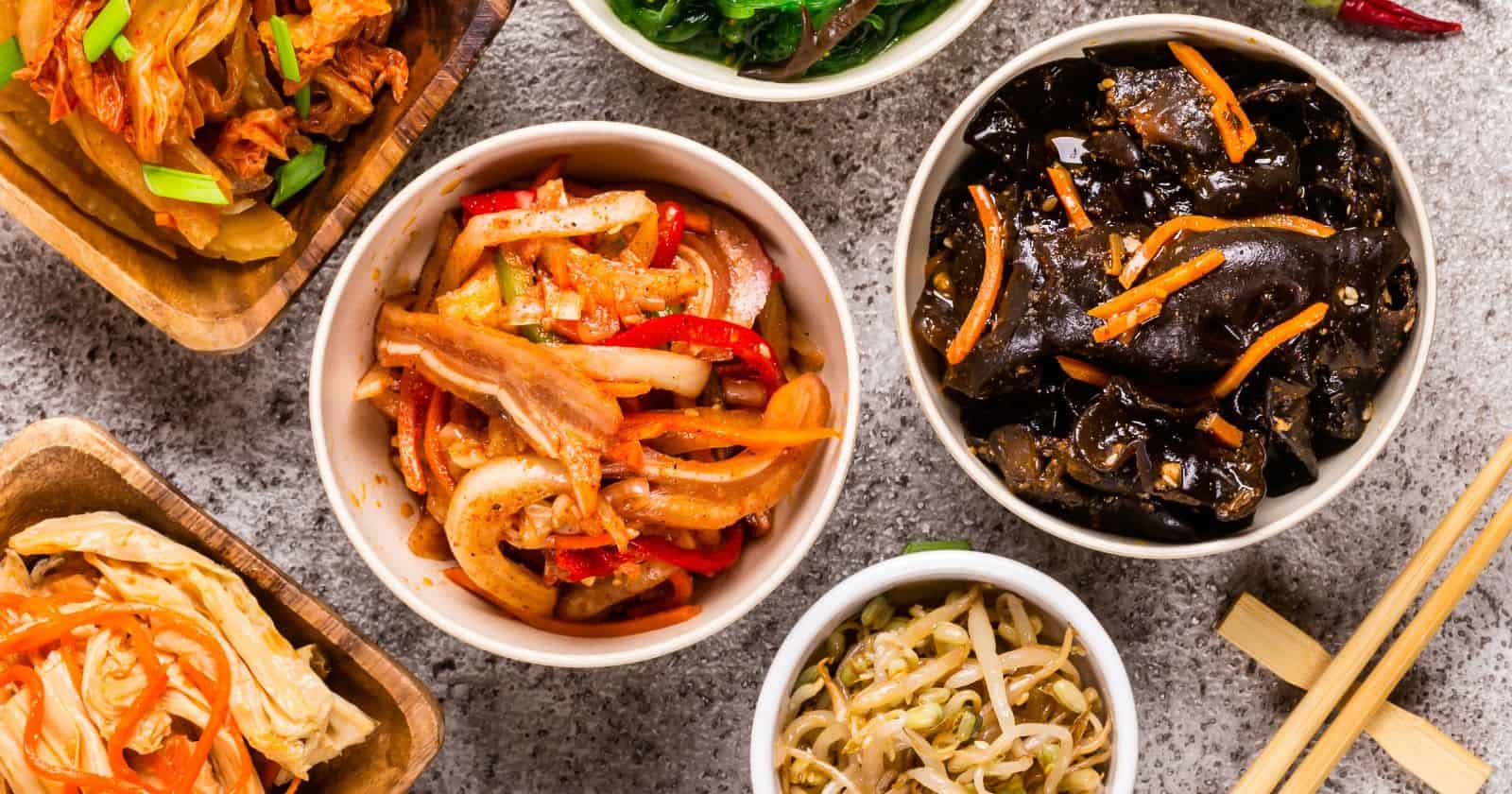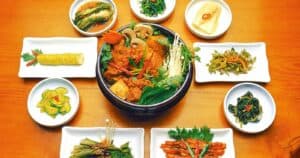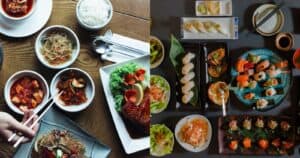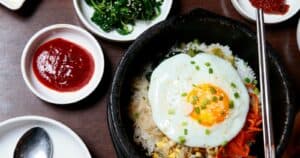Do you find yourself tossing Korean banchan dishes more often than you’d like? With the right storage methods, you can keep these flavorful sides fresher for longer. This guide will teach you how to extend the shelf life of popular Korean side dishes. Get ready to cut down on food waste and enjoy those banchan for days!
First, Understand What Affects How Long Banchan Can Be Stored
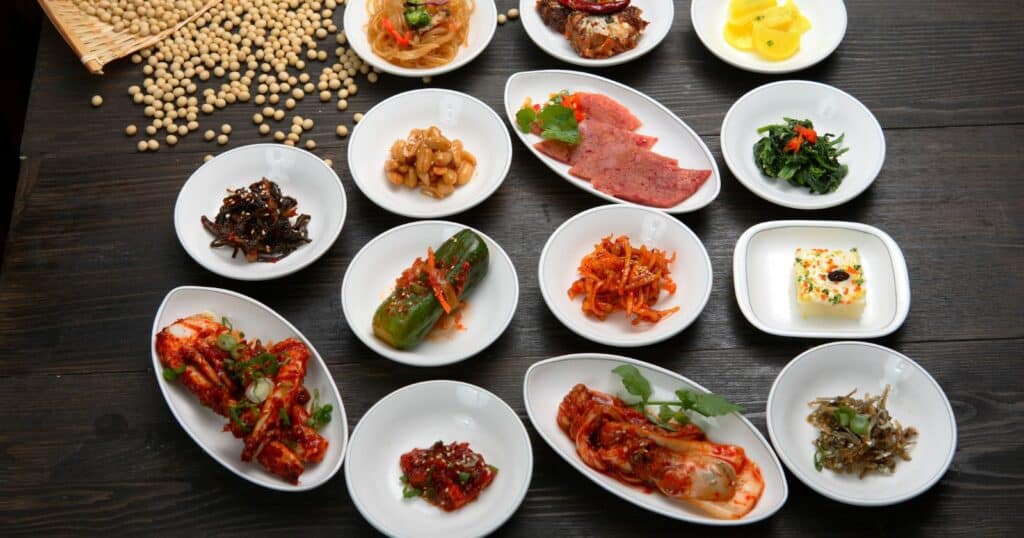
Many factors determine how long Korean side dishes will stay fresh and delicious in your fridge or freezer. Here are the main things that play a role:
- Temperature – Banchan lasts longer when stored at cooler temps below 75°F. Heat speeds up spoilage.
- Packaging – Airtight containers prevent spoilage better than loose or porous packaging.
- Ingredients – Fermented or pickled ingredients (like in kimchi) preserve better than fresh ingredients.
- Salt/Sugar/Acid Content – Higher levels act as natural preservatives.
- Dish Characteristics – The specific prep method affects the moisture level, shelf life, and how well it stores.
Knowing what impacts the storage life of banchan gives you the power to maximize freshness.
Use Proper Storage Practices to Maintain Quality
To keep banchan tasting great, make sure to:
- Refrigerate ASAP – Get dishes into the fridge fast, before bacteria can grow.
- Use Airtight Containers – Lidded jars or containers block air flow to prevent spoilage.
- Control Temperature – Store at a consistent fridge temp of 40°F or below.
- Practice Good Hygiene – Wash hands, utensils, surfaces to avoid cross-contamination.
Proper storage practices are key for extending the shelf life of Korean side dishes.
Suggested Fridge Life for Popular Banchan Dishes
Wondering how long you can store some favorite Korean side dishes? Here are estimated fridge life times:
- Cucumber Salad: 1 day
- Radish Salad: 5-6 hours
- Kabocha Salad: 2 hours
- Sauteed Burdock: 5-6 days
- Korean Pancakes: 2-3 days
- Meat/Seafood Jorim: 4-5 days
- Most Banchan: 4 days
For the best quality, store banchan in airtight containers at 40°F or less. If mold, smell, or texture changes appear, toss the dish.
The Science Behind Varying Storage Times
Ever wonder why some Korean sides last longer than others? Here’s a look at the science behind it:
- Ingredients – Dishes with fermented or pickled veggies have longer shelf lives from the natural preservation.
- Moisture Content – Higher moisture equals faster spoilage. Dried foods like burdock preserve better.
- Salt/Sugar – Higher levels inhibit microbial growth through osmosis. This acts as a natural preservative.
- Acidity – Acidic dishes like vinegar-pickled foods are harder for pathogens to grow in.
- Fat Content – High-fat foods like meat jorim spoil faster than low-fat dishes.
Understanding why banchan storage life varies gives you insight into extending shelf life.
Expert Tips to Make Banchan Stay Fresher Longer
Use these pro tips to get the most mileage from your Korean side dishes:
- Store in smaller portions so you only reheat what you need.
- Let hot banchan fully cool before refrigerating.
- Use multiple shallow containers over one deep container for faster cooling.
- Keep banchan towards the back of the fridge, not the door.
- Rinse and pat dry ingredients before storing to remove excess moisture.
- Transfer to an airtight container after opening original packaging.
- Label containers with the date and name for easy identification.
Every extra day of freshness counts with these expert banchan storage tips!
Preserve Banchan the Old-Fashioned Way
For centuries, Koreans have used various traditional preservation methods to make banchan last longer. These techniques add unique flavor while naturally extending shelf life.
Classic Korean preservation methods you can try:
- Pickling (jangjorim) – Soak veggies, meat, seafood in a vinegar brine solution to preserve them.
- Fermenting (jangdok) – Allowing natural fermentation produces lactic acid that acts as a preservative.
- Drying (gosang) – Removing moisture prevents microbial growth and spoilage.
- Salting (sangju) – Salt cures meats and pulls moisture out through osmosis.
- Smoking (gimchi) – Exposing foods to wood smoke preserves and adds flavor.
- Stuffing (bangjang) – Filling fruits/veggies with spices and herbs helps preserve them.
- Potting (drugil) – Storing food in airtight containers prevents spoilage.
- Curing (sajeon) – Salt, sugar, and spices preserve meat or seafood.
Reviving old techniques like pickling (jangjorim), fermenting (jangdok), and drying (gosang) can help make your banchan stay fresh longer.
Know When It’s Time to Toss Your Banchan
To avoid foodborne illness, check your stored banchan for these signs of spoilage:
- Mold growth
- Foul, unpleasant smell
- Changed appearance or color
- Abnormal slimy texture
- Unusual bitter or sour taste
When a dish clearly exhibits multiple signs, don’t take chances. Play it safe and throw it out. You can always make a fresh batch to enjoy soon after preparing.
Extend Your Banchan’s Shelf Life With These Simple Tricks
Use these easy tips and tricks to keep your precious banchan fresher for longer:
- Store in sealed glass or plastic containers, not porous materials.
- Portion into smaller containers to limit air exposure when reheating.
- Keep banchan far away from raw meats in the fridge to prevent cross-contamination.
- Rinse and drain excess liquid from vegetables before storage.
- Use ice cube trays for sauces to limit air contact and freeze for longer storage.
- Clean containers thoroughly before reuse and replace any with cracks or chips.
A little extra care goes a long way when it comes to maximizing the shelf life of your favorite Korean dishes!
Enjoy Korean Flavors Longer With Proper Banchan Storage
Storing Korean side dishes properly lets you enjoy those classic flavors for more meals before having to make a fresh batch. Follow these food safety guidelines, storage tips, and preservation tricks to keep banchan tasting great.
Say goodbye to wasting beloved banchan. With this knowledge, you can keep those yummy Korean flavors around for weeks instead of just days!

